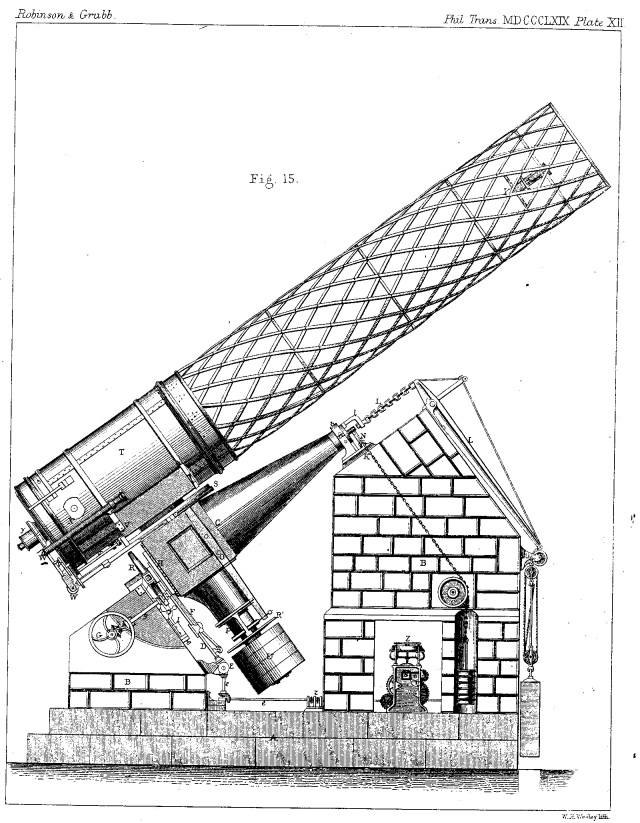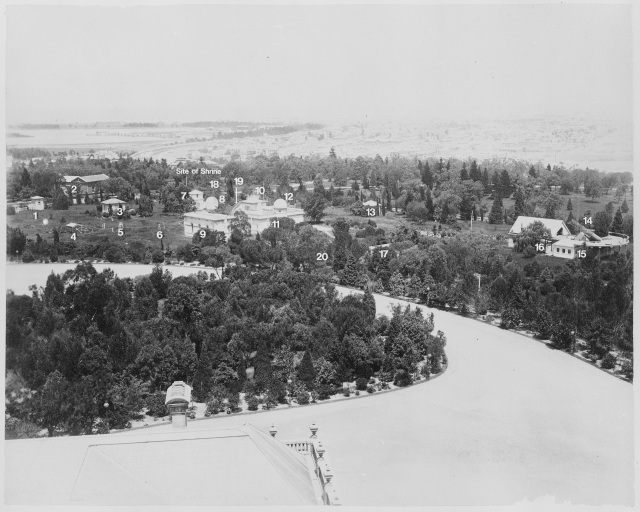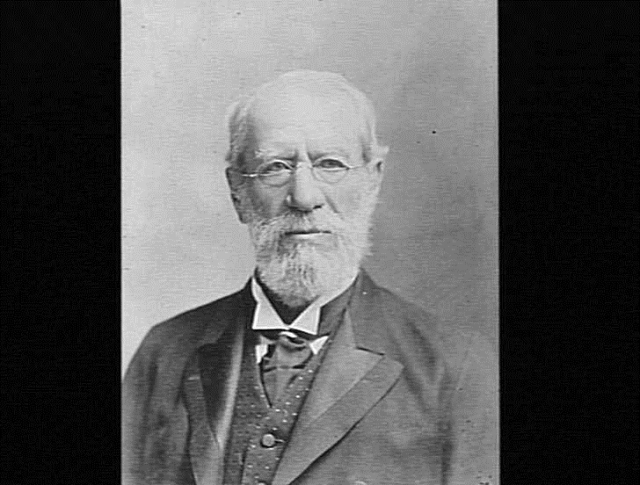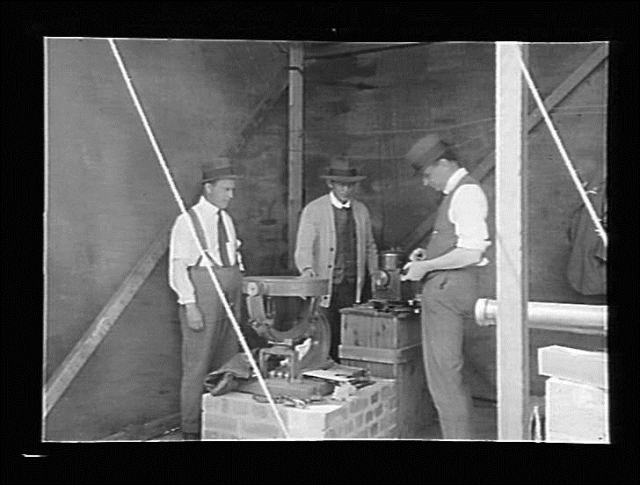The Great Melbourne Telescope (GMT) was built by Thomas Grubb of Dublin in 1868 and erected at Melbourne Observatory in 1869. It was a reflecting telescope with a speculum (metal) mirror of 48 inches (1.2 metres) diameter. At the time it was the second largest telescope in the world and the largest in the southern hemisphere.
The design and construction was overseen by a committee of eminent British astronomers, which approved Thomas Grubb’s revolutionary design. Although incorporating many of Grubb’s earlier innovations, the telescope was on a larger scale than anything he had previously attempted. Grubb’s firm went on to make many of the major telescopes around the world in the second half of the 19th century.
The telescope was operated at Melbourne Observatory by a Great Melbourne Telescope Observer: Albert Le Sueur (1869-70), E. Farie MacGeorge (1870-72), Joseph Turner (1873-83), and Pietro Baracchi (1883-92); thereafter it was used rarely.
The astronomers had to painstakingly observe faint nebulae and distant galaxies, then produce pencil sketches of their observations. Repeated observations over many nights were needed to gain an accurate drawing.
The telescope was working near the limits of available technology. There were underlying difficulties with tarnishing of its mirrors, flexure in the primary mirror, and vibration due to wind.
The telescope was not well suited to the emerging astronomical techniques of photography and spectroscopy. It took some excellent photographs of the moon, and some early photos of nebulae, which required exposures of up to 40 minutes. But smaller refracting telescopes were better suited at the time to photographic work.
When Melbourne Observatory closed in 1944, the telescope was sold to the Commonwealth Observatory at Mount Stromlo, Canberra. At Mount Stromlo the telescope was given a new 50-inch glass mirror made by Grubb-Parsons, and became an integral part of Mt Stromlo’s work from 1961 into the 1970s.
In the 1990s the telescope was rebuilt with two large-scale digital cameras for the MACHO project, a search for evidence of dark matter. Our first ever glimpse of MAssive Compact Halo Objects was through the GMT. Then in January 2003 a bushfire swept across Mt Stromlo, its firestorm destroying the majority of the telescopes and buildings.

Source: Robinson & Grubb, Plate 12

Source: Museum Victoria (SH 950104)
Timeline
1834-1838
John Herschel conducts systematic observations of the southern nebulae from the Cape of Good Hope.
1845
Lord Rosse constructs a huge telescope with a 6-foot reflecting mirror on his estate in Ireland: the ‘Leviathan of Parsonstown’. He observes nebula M51, and resolves that is a spiral galaxy.
1849
The British Association for the Advancement of Science calls for a large reflecting telescope to be erected in the southern hemisphere.
1853
The Southern Telescope Committee assesses designs, but the British Government declines to fund the telescope, due to its commitments to the Crimean War.
Williamstown Observatory commences as Melbourne’s first astronomical observatory.
1856
William Wilson, Professor at Melbourne University, in a paper to the Philosophical Institute of Victoria, calls for a large reflecting telescope to be built in Melbourne, as part of a national observatory.
1861
Edward Sabine, President of the Royal Society of London, encourages Wilson to rally support in Victoria.
1862
Wilson, as Secretary of Board of Visitors to Melbourne Observatory, proposes a large telescope to Governor Henry Barkly. The Royal Society of London supports the idea and settles on the preferred design.
1863
Melbourne Observatory opens.
1865
The Victorian Government orders the telescope from Thomas Grubb, Dublin.
1866
Albert Le Sueur appointed GMT observer and commences training in England.
1868
Feb: The Royal Society Committee inspects the finished telescope, and approves it as a ‘Masterpiece of Engineering’.
Dec: The GMT arrives in Melbourne.
1869
July: GMT operational, making observations of nebulae, comet, Neptune.
1870
Paper read to Royal Society of London detailing observations of nebulae of Argo and Orion with GMT, and of great changes in the nebulae since observed by John Herschel.
Le Sueur resigns as GMT observer; Farie MacGeorge appointed new GMT observer.
1872
Photos of Moon taken with GMT, and sent to Britain. Copies circulated to Victorian schools, mechanics’ institutes & libraries.
MacGeorge publishes paper on nebulae observations; determines that GMT’s light gathering power is greater than John Herschel’s large reflecting telescope.
GMT now working very well, after initial problems.
1873
Joseph Turner replaces MacGeorge as GMT observer.
1874
Turner commences systematic comparison with John Herschel’s nebulae observations from the 1830s.
1883
First photos taken of Orion Nebula in southern hemisphere, with new dry-plates. Not successful with η Argus Nebula.
Photos of κ Crucis, η Argus and Orion Nebula sent to Royal Astronomical Society.
Pietro Baracchi replaces Turner as GMT observer.
1885
Publication of Observations of the Southern Nebulae made with the Great Melbourne Telescope from 1869 to 1885, Part 1.
1888
Use of GMT declines.
Experiments to repolish the large mirrors commence, and continue to 1890, when Mirror A is installed with a good figure and polish.
1890
Government Astronomer Robert Ellery considers placing a refracting telescope on the GMT mounting, indicating he considers the optics in the telescope are at the end of their useful life.
1892
Examination of southern nebulae suspended, due to reductions in staff during the 1890s Depression. Large number of drawings and observations by Baracchi awaiting publication.
Discretionary resources of Observatory directed to a new international project to photograph the whole of the night sky, using a new telescope.
1894
GMT used for sketches of Mars at its close approach to Earth.
1910
Halley’s Comet is photographed by a camera attached to the GMT for tracking.
1944
Melbourne Observatory closes. GMT sold to Commonwealth Government for erection at Mount Stromlo Observatory near Canberra.
1961
GMT rebuilt at Stromlo with a 50 inch (1.25 metre) Pyrex mirror and new controls. Telescope used for photoelectric photometry and infrared observations.
1973
GMT decommissioned when a major bearing fails.
1984
Discarded parts of GMT returned to Melbourne.
1992
GMT rebuilt for MACHO (Massive Astronomical Compact Halo Object) project to detect evidence of dark matter. Telescope provided with two detector mosaics; at the time these were the two largest electronic cameras in the world.
2003
Bushfires destroy the major telescopes and buildings at Mount Stromlo.
2008
Remaining parts of GMT recovered and returned to Melbourne.
2009
Disassembly of telescope and documenting of parts.
Melbourne Observatory 1863 – 1900
Melbourne Observatory was established in 1863 through the merging of Williamstown Observatory, which had been established in 1853 as an astronomical observatory, and the Flagstaff Observatory, which had been conducting magnetic and meteorological observations since 1858. Robert Ellery was appointed Government Astronomer, in charge of the Observatory’s combined functions of astronomy, timekeeping, geodetic surveying, magnetic research and meteorology.
Ellery would remain Government Astronomer until his retirement in 1895, and during this period he created one of the leading scientific institutions in Australia. By the mid 1880s there was a staff of about 11, including assistant astronomers, meteorologists and a mechanic and messenger.
Ellery and his staff covered a wide range of scientific activities, from pure research to practical science that was critical for the colony’s operations. This included fundamental mapping of the southern hemisphere stars, published as catalogues and distributed to astronomers around the world. Special astronomical events such as solar eclipses, transits of Mercury or Venus across the face of the sun, and comets resulted in special projects to compare observations of the phenomena with astronomers worldwide. With the arrival of the Great Melbourne Telescope in 1869, the Observatory began a detailed study of the southern nebulae to see if these had changed in their character since observations by Herschel in the early 19th century.
Meanwhile, the Observatory contributed to the practical operation of the colony. It provided standard Observatory time to ship’s captains, central city clocks and the railways. Telegraphic connection to weather stations throughout Victoria and the other colonies enabled the gathering of meteorological data; by 1881 it was providing weather maps and weather forecasts to the daily papers.
In 1890 the Observatory joined an international project to take photographs of the entire sky, and create maps and catalogues from the photographs. Melbourne Observatory was one of 18 observatories to join what was the largest scientific project undertaken in the 19th century. Teams of workers were engaged to measure the star photographs. This project would consume the energies of the Observatory (and many others) for the next 20 years, and the final Melbourne catalogue was not published until 1963.

Source: Museum Victoria (MM 59383)

Source: Museum Victoria (MM 59450)
Melbourne Observatory 1900 – 1944
Robert Ellery retired in 1895, and the 1890s Depression had hit both staffing levels and operating funds. The Observatory took years to regain a full complement of staff. In 1908 the Commonwealth Government took over responsibility for meteorology and some staff transferred to the Weather Bureau. Australian Federation in 1901 had also brought new responsibilities, as the checking of weights and measures, previously done by Customs, was transferred to the Observatory.
It was symbolic that the building to house the weights and measures would be tacked onto the Great Melbourne Telescope House, recognition that the telescope had ceased its useful scientific life.
While the Observatory continued to do important astronomical observations, mounted eclipse expeditions, and undertook some new projects in astronomy and physics, by the 1920s there was a sense it was being weighed down by its administrative burdens, and the long-drawn out battles to get sufficient funds to reduce and publish observations made decades before.
Astronomy, like meteorology, was specifically mentioned in the Constitution as a Commonwealth responsibility, and Melbourne Observatory, like its counterparts in Sydney and Adelaide, was never adequately funded after World War I. Appropriately it was Pietro Baracchi (the second Government Astronomer) and Joseph Baldwin (the third and last Government Astronomer) who undertook observations every month for a year in 1911-12 at Mount Stromlo, leading to the creation of the Commonwealth Solar Observatory in 1924, the first astronomical institution of the federal government.
Melbourne Observatory closed in 1944. The timekeeping responsibilities were taken over by the Postmaster-General’s Department, the Great Melbourne Telescope and observational records were sent to Mount Stromlo, and the weights and measures function continued at the observatory site. Some original instruments remained, to be operated by the Astronomical Society for Victoria for its members and the general public. Older equipment was transferred to Museum Victoria.
The Melbourne Observatory site is now part of the Royal Botanic Gardens Melbourne, which in partnership with the Astronomical Society of Victoria interprets the history of the site and offers public viewings through the remaining telescopes.

Source: Museum Victoria (MM 30309)
Fact Sheets
This fact sheet series provides information on the GMT historical background, technical details of the instrument and the efforts to reconstruct this magnificent telescope for use by the public.
- GMT-Fact-Sheet-01-Second-Life-at-Mt-Stromlo (PDF, 159KB)
- GMT-Fact-Sheet-02-Mechanical-Innovations-Part-1 (PDF, 107KB)
- GMT-Fact-Sheet-03-Mechanical-Innovations-Part-2 (PDF, 103KB)
- GMT-Fact-Sheet-04-Mechanical-Innovations-Part-3 (PDF, 101KB)
- GMT-Fact-Sheet-05-GMT-House (PDF, 100KB)
- GMT-Fact-Sheet-06-Primary-Mirror-Construction (PDF, 158KB)
- GMT-Fact-Sheet-07-Clock-Drive (PDF, 100KB)
- GMT-Fact-Sheet-08-Myth-of-Failure (PDF, 36KB)
- GMT-Fact-Sheet-09-Optical-Specifications (PDF, 96KB)
